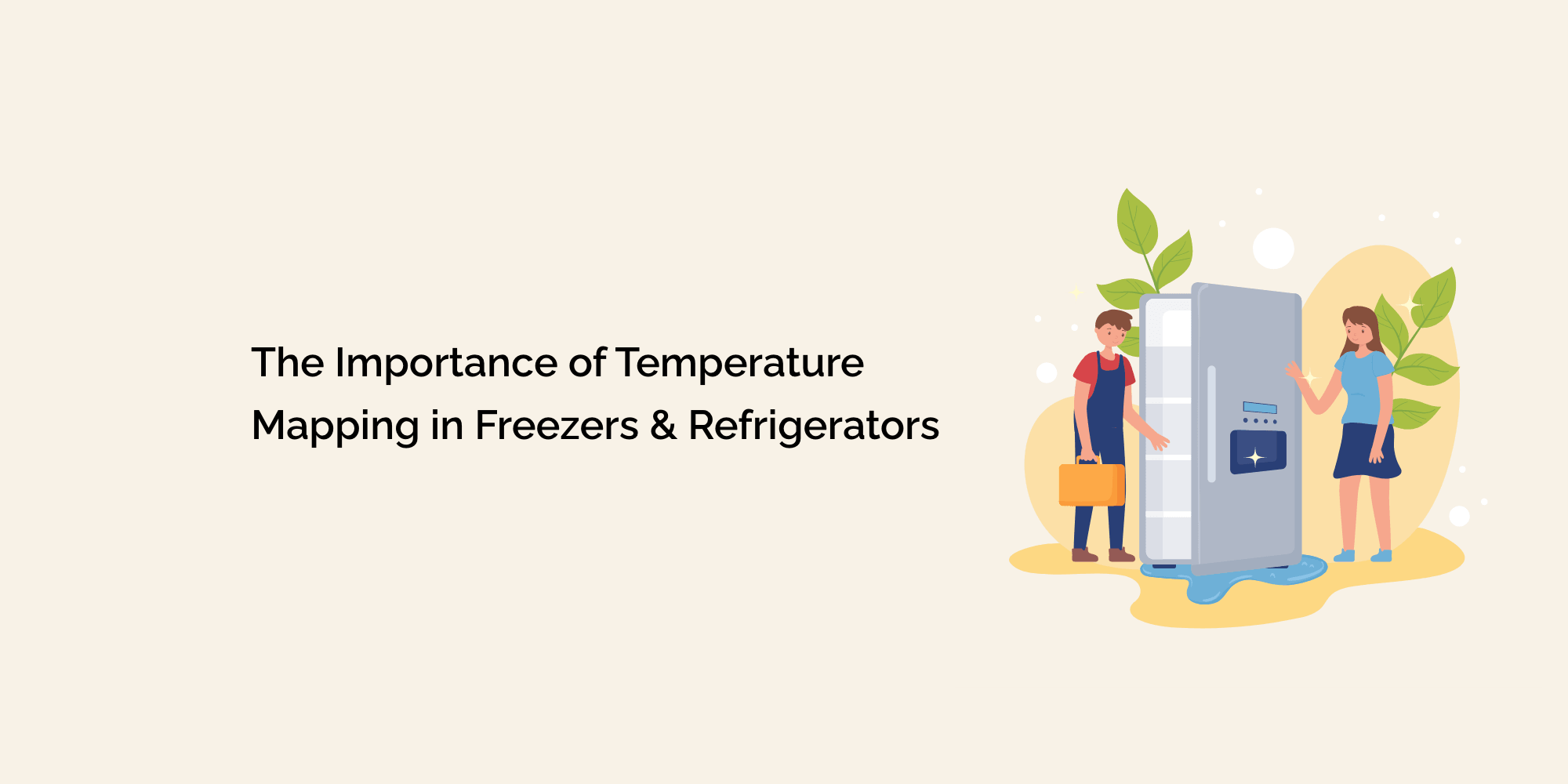Temperature mapping plays a vital role in ensuring the quality and safety of perishable goods stored in freezers and refrigerators. These appliances are critical for various industries, including food storage, pharmaceuticals, and biomedical research. Temperature mapping involves monitoring and recording temperature variations throughout the storage space to identify potential hotspots and ensure uniform temperature distribution.
In this blog, we will explore the importance of temperature mapping in freezers and refrigerators and discuss how it helps maintain optimal storage conditions for sensitive products.
Understanding Temperature Mapping:
Temperature mapping involves systematically monitoring and recording temperature data at various locations within a freezer or refrigerator. This process provides an accurate picture of temperature distribution throughout the storage space. Here's why temperature mapping is essential:
Identifying Hotspots and Temperature Variations:
Temperature mapping helps identify hotspots and areas with temperature variations within the storage unit. These variations can result from factors such as inadequate airflow, incorrect shelving, or malfunctioning equipment. By identifying these areas, corrective actions can be taken to ensure uniform temperature distribution.
Ensuring Compliance with Regulatory Standards:
Temperature mapping is crucial for compliance with regulatory standards and guidelines. Many industries, such as pharmaceuticals and biotechnology, have strict requirements for temperature control and monitoring. Conducting temperature mapping studies helps demonstrate adherence to these regulations.
Preventing Product Spoilage:
Accurate temperature mapping helps prevent product spoilage. Sensitive products, such as vaccines, medications, and biological samples, require specific temperature ranges for optimal storage. Mapping the temperature distribution ensures that these products are stored within the acceptable temperature limits, preventing degradation and maintaining their efficacy.
Enhancing Product Quality and Shelf Life:
Uniform temperature distribution throughout the storage space is essential for preserving product quality and extending shelf life. Temperature mapping allows businesses to identify areas where temperature fluctuations may compromise product integrity. By addressing these fluctuations, product quality can be maintained, reducing the risk of customer dissatisfaction and financial losses.
The Temperature Mapping Process:
The temperature mapping process involves the following steps:
Define Mapping Locations:
Determine the critical locations within the freezer or refrigerator where temperature sensors will be placed. These locations should represent the storage space adequately and cover areas prone to temperature variations.
Install Temperature Sensors:
Place temperature sensors in the defined locations, ensuring proper positioning and secure attachment. Use calibrated sensors that provide accurate and reliable temperature readings.
Record Temperature Data:
Set up a data logging system to record temperature data continuously. The data loggers should be capable of capturing temperature readings at regular intervals and storing the data securely for analysis.
Monitor and Analyze Data:
Monitor the temperature data over an extended period, typically several days or weeks, to capture variations under different conditions. Analyze the data to identify any temperature deviations or hotspots.
Take Corrective Actions:
If temperature variations or hotspots are identified, take corrective actions such as adjusting airflow, relocating shelves, or repairing malfunctioning equipment. Monitor the impact of these actions through further temperature mapping or ongoing monitoring.
Document and Maintain Records:
Maintain detailed documentation of the temperature mapping process, including the mapping locations, sensor placement, data analysis, corrective actions taken, and verification of improvements. These records serve as evidence of compliance and demonstrate due diligence.
Benefits of Temperature Mapping:
Temperature mapping offers several benefits for businesses:
-
Regulatory Compliance: Temperature mapping helps businesses meet regulatory compliance requirements, demonstrating that they are actively monitoring and maintaining proper temperature conditions for sensitive products.
-
Product Integrity and Quality: By identifying and addressing temperature variations, temperature mapping helps maintain product integrity and quality. This ensures that products remain safe, effective, and meet customer expectations.
-
Cost Savings: Proper temperature mapping reduces the risk of product spoilage, minimizing financial losses associated with wasted inventory. It also helps optimize energy usage by identifying areas where temperature control can be improved, leading to energy savings.
-
Process Optimization: Temperature mapping provides insights into the performance of the freezer or refrigerator, allowing businesses to optimize their storage processes. By understanding temperature distribution, businesses can make informed decisions regarding equipment placement, airflow management, and storage organization.
Conclusion:
Temperature mapping is crucial for maintaining optimal storage conditions in freezers and refrigerators. It helps identify hotspots and temperature variations, ensures compliance with regulatory standards, prevents product spoilage, and enhances product quality and shelf life.
By implementing temperature mapping protocols and regularly monitoring temperature distribution, businesses can demonstrate their commitment to product integrity, regulatory compliance, and customer satisfaction. Effective temperature mapping contributes to the safe storage of sensitive products, reduces financial losses, and optimizes operational efficiency.
As the demand for strict temperature control and product quality assurance increases, temperature mapping becomes an essential practice for businesses across various industries.








